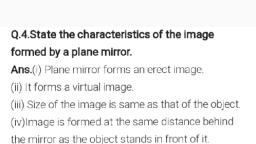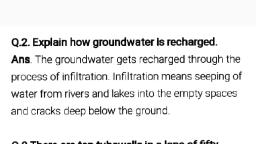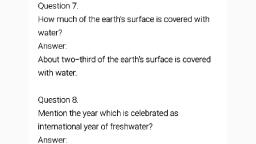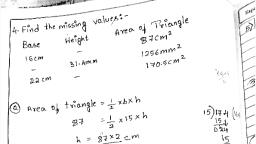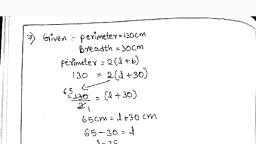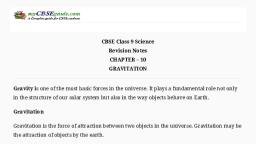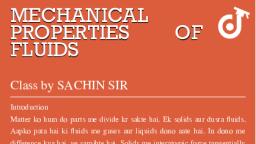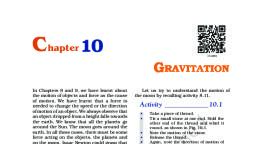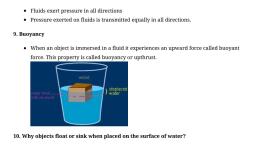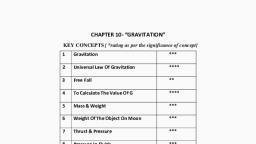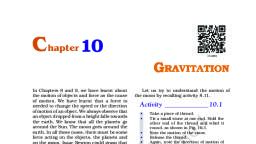Page 1 :
5) Thrust and pressure :, a) Thrust :Thrust is the force acting on an object perpendicular to the surface., , Eg :- When you stand on loose sand the force (weight) of your body is, acting on an area equal to the area of your feet. When you lie down, the, same force acts on an area equal to the contact area of the whole body., In both cases the force acting on the sand (thrust) is the same., , b) Pressure :Pressure is the force acting on unit area of a surface., Thrust, Pressure = ---------Area, , Eg :- The effect of thrust on loose sand is larger while standing than, while lying down., The SI unit of thrust is N/m? or N m?*. It is called Pascal (Pa)., , Scanned with CamScanner
Page 2 :
6a) Pressure in fluids (Liquids and gases) :, Fluids exert pressure on the base and walls of the container. Fluids, exert pressure in all directions. Pressure exerted on fluids is transmitted, equally in all directions., , b) Buoyancy (Upthrust) :When an object is immersed in a fluid it experiences an upward force, called buoyant force. This property is called buoyancy or upthrust., The force of gravity pulls the object downward and the buoyant force, pushes it upwards., The magnitude of the buoyant force depends upon the density of the, fluid. Gravity, , , , Buoyant Force, , Scanned with CamScanner
Page 3 :
c) Wh jects float or sink in water ?, , If the density of an object is less than the density of a liquid, it will, float on the liquid and if the density of an object is more than the, density of a liquid, it will sink in the liquid., , Activity :Take some water in a beaker. Take a piece of cork and an iron nail of, the same mass. Place them on the water. The cork floats and the nail, sinks., The cork floats because the density of cork is less than the density of, water and the upthrust of water is more than the weight of the cork., The nail sinks because the density of the iron nail is more than the, , density of water and the upthrust of water is less than the weight of the, nail. Gravity, , , , , , , , , Cork, , Iron nail, , Buoyant Force, , Scanned with CamScanner
Page 4 :
7) Archimedes’ principle :Archimedes’ principle states that, ‘When a body is partially or fully, immersed in a fluid it experiences an upward force that is equal to the, , weight of the fluid displaced by it.’, , Archimedes principle has many uses. It is used in designing ships, and submarines, Hydrometers used to determine the density of, liquids, lactometers used to determine purity of milk etc., , , , , , , , ete lan, , , , , , , , , , , , , , , , , , , , , , Scanned with CamScanner
Page 5 :
8) Density and relative density :, i) Density :- The density of a substance is the mass of a, unit volume of the substance., , Mass, Density = ----------Volume, The unit of density is kilogram per metre cube (kg m *)., ii) Relative density :- The relative density of a substance, , is the ratio of the density of a substance to the density of, water., , Density of a substance, Relative density = -------------------------------==, Density of water, , Since relative density is a ratio of similar quantities, it, has no unit., , Scanned with CamScanner




